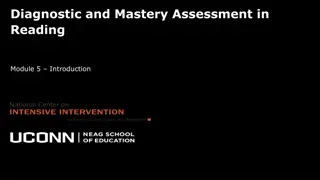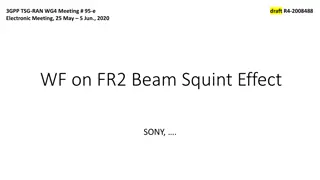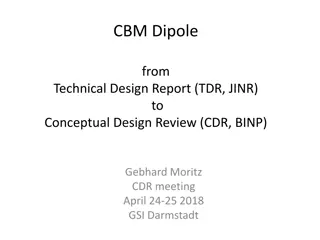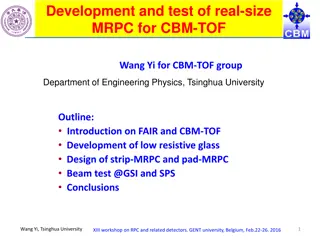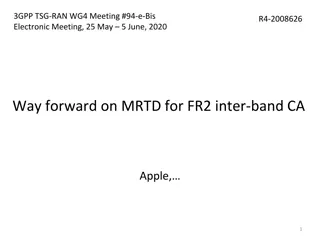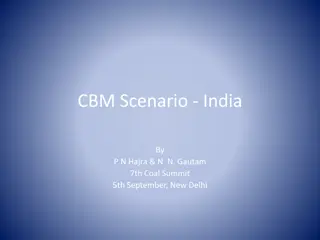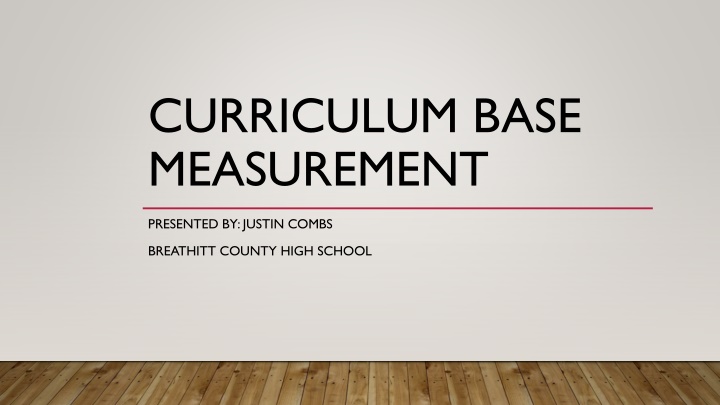
Curriculum-Based Measurement for Student Progress Monitoring
Learn about Curriculum-Based Measurement (CBM) as an effective approach to measuring student proficiency and progress using probes taken from the general curriculum. Discover the characteristics, uses, outcomes, and examples of CBM in education, including Oral Reading Fluency and Math Computation Probes.
Download Presentation

Please find below an Image/Link to download the presentation.
The content on the website is provided AS IS for your information and personal use only. It may not be sold, licensed, or shared on other websites without obtaining consent from the author. If you encounter any issues during the download, it is possible that the publisher has removed the file from their server.
You are allowed to download the files provided on this website for personal or commercial use, subject to the condition that they are used lawfully. All files are the property of their respective owners.
The content on the website is provided AS IS for your information and personal use only. It may not be sold, licensed, or shared on other websites without obtaining consent from the author.
E N D
Presentation Transcript
CURRICULUM BASE MEASUREMENT PRESENTED BY: JUSTIN COMBS BREATHITT COUNTY HIGH SCHOOL
CURRICULUM BASE MEASUREMENT DEFINED CBM is an approach using probes to measure the growth of student proficiency Probes are brief time samples made up of academic skills taken from the general curriculum. CBM can be standardized to provide valid and reliable indications of student progress
CHARACTERISTICS OF CBM Used to monitor student progress across and entire year Probes are brief and easy to administer Administered weekly or as benchmarks and administered the same way each time Each probe samples curriculum for an entire year Each probe is different, but each form assesses the same types of skills at same level of difficulty L.S. Fuchs & Fuchs
CBM CAN BE USED TO Monitor student learning outcomes Identify at-risk students Evaluate intervention effectiveness Guide instruction and cue instructional changes Measure Annual Yearly Progress Monitor annual goals and objectives L.S. Fuchs & Fuch
OUTCOMES OF CBM Improved student academic outcomes More effective instruction Higher student achievement Increased student responsibility for learning Relationship between CBM and high stakes testing Better communication between parents and teachers Fuchs, Deno, Mirkin
CURRICULUM BASE MEASUREMENT EXAMPLES Oral reading fluency probes Math computation probes Math concepts and application probes Reading Comprehension probes Spelling probes
ORAL READING FLUENCY (ORF) DEFINED Measurement of student s rate, accuracy, phrasing and intonation One minute reading of a passage Can be utilized in any content area
MATH COMPUTATION PROBES DEFINED Measurement of math computation skills Accuracy toward completions of addition, subtraction, multiplication, and division of whole numbers, fractions, and decimals
MATH CONCEPTS AND APPLICATION PROBES DEFINED Measurement of math reasoning skills Measuring accuracy toward performance of place value, time, money, charts, graphs, and problem solving
READING COMPREHENSION PROBES Measure the student s understanding of a reading passage Grade level should be student s independent grade level Probes should take student 5-7 minutes to answer Multiple choice
SPELLING PROBES PROCESS Obtain grade-level spelling CBM list (10 words) Use stopwatch or timer (2 minute limit) Quiet testing environment Give student words to spell Wait for 10 seconds before giving the next word unless student finished spelling Grading is different
KEY PARTS OF CBM Knowing where the student is performing through the use of weekly probes Analyzing each student to determine if there needs to be a change is instruction or if a few students need alternative teaching approach Probes need to be brief (1-7 minutes). Scoring the probes should take no longer than 5 minutes Student receives immediate feedback on the probes Score is then documented on a graph each week to determine growth Students can create the graph and plot the data points each week to keep up with their performance
ACTION STEPS TEACHERS NEED TO ACCOMPLISH CBM MICRO-CREDENTIAL Teacher will develop CBM probes that align with IEP goal. Teacher implements and scores the probes for the student with a disability regularly. Teacher will graph the scores on a graph. Teacher, sets goals for the student with a disability. Teacher will make instructional decisions. Teacher will share results with parents and other educational professionals.
CONTACT INFORMATION JUSTIN COMBS JUSTIN.COMBS@BREATHITT.KYSCHOOLS.US

